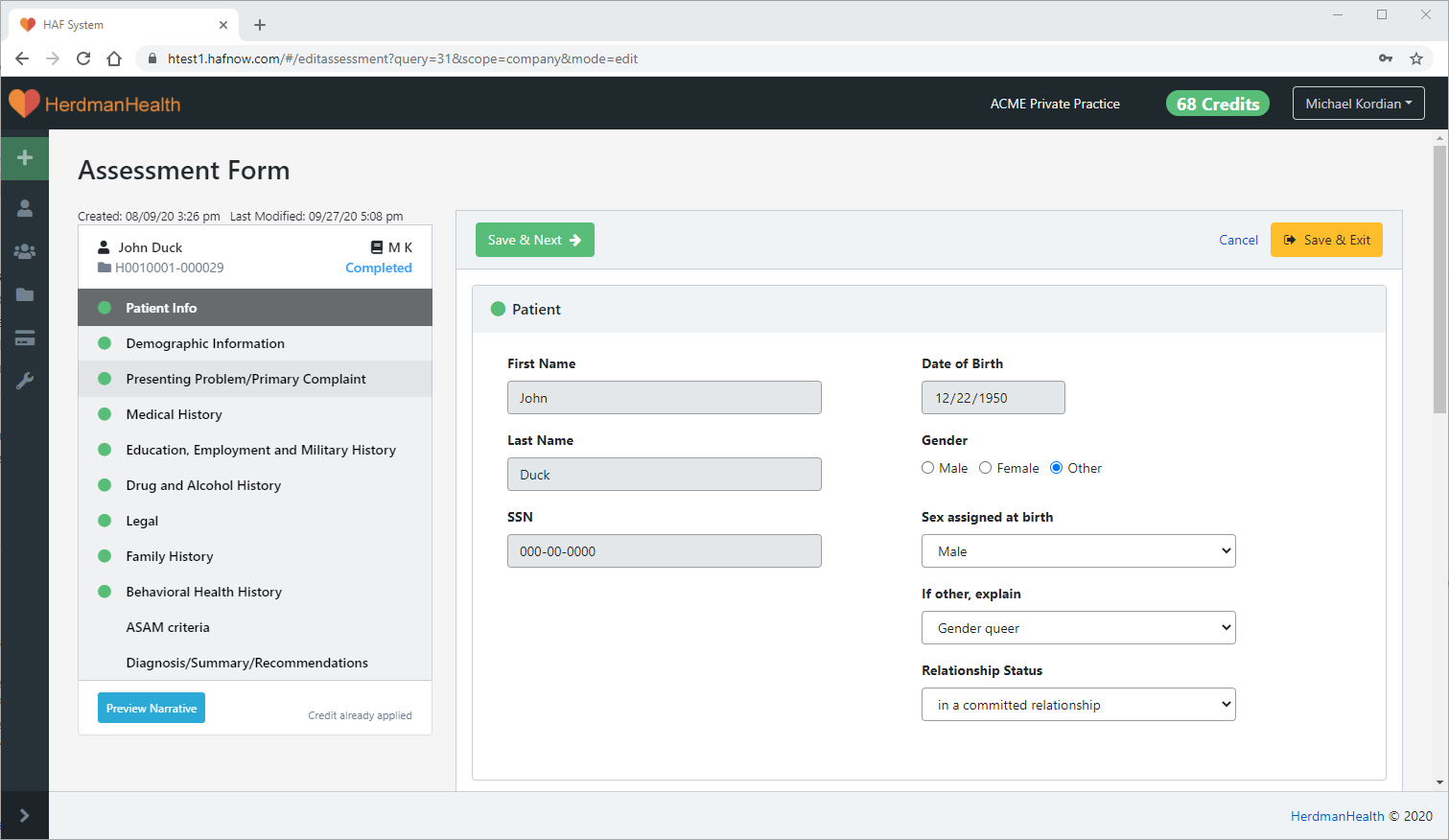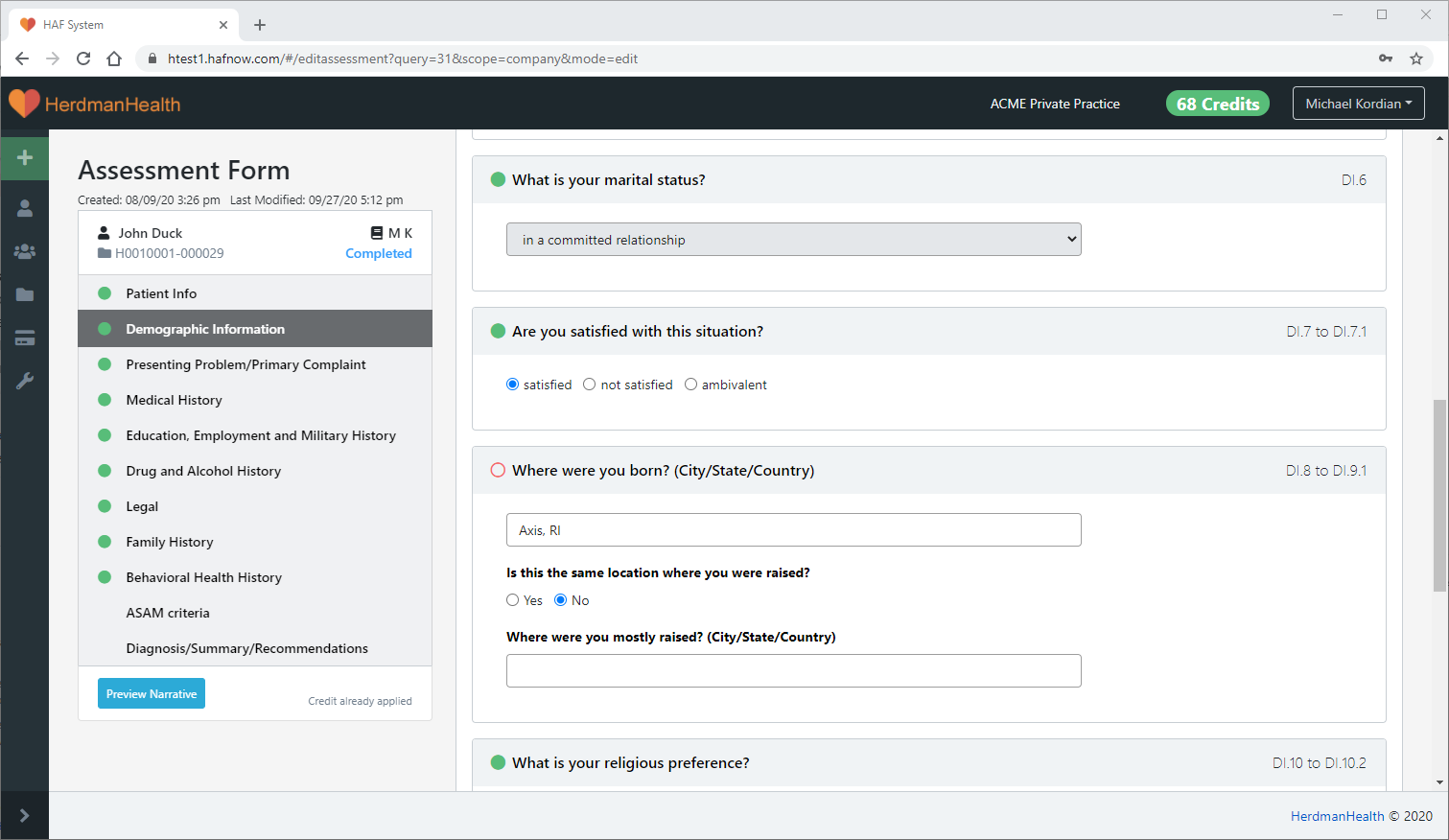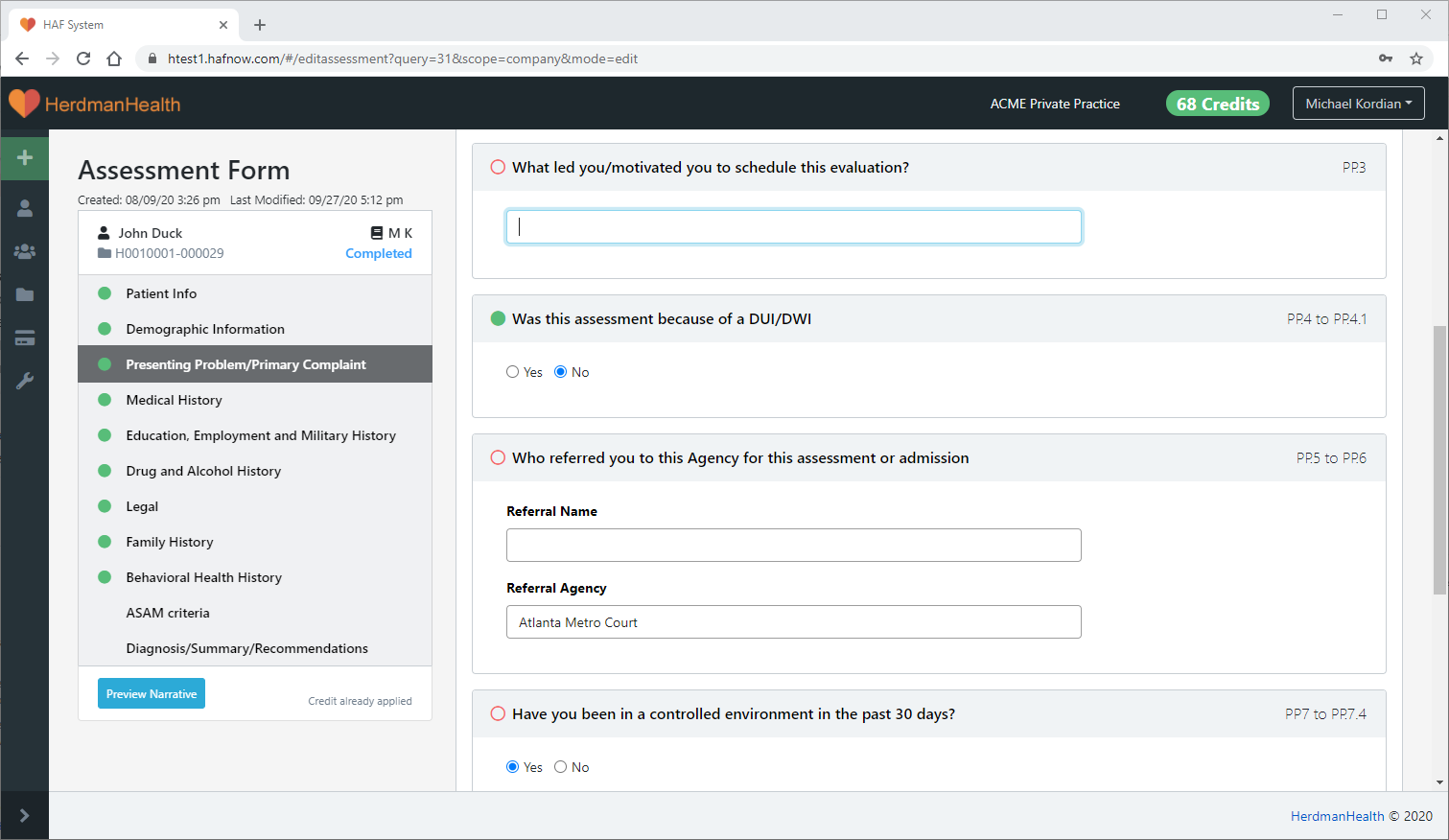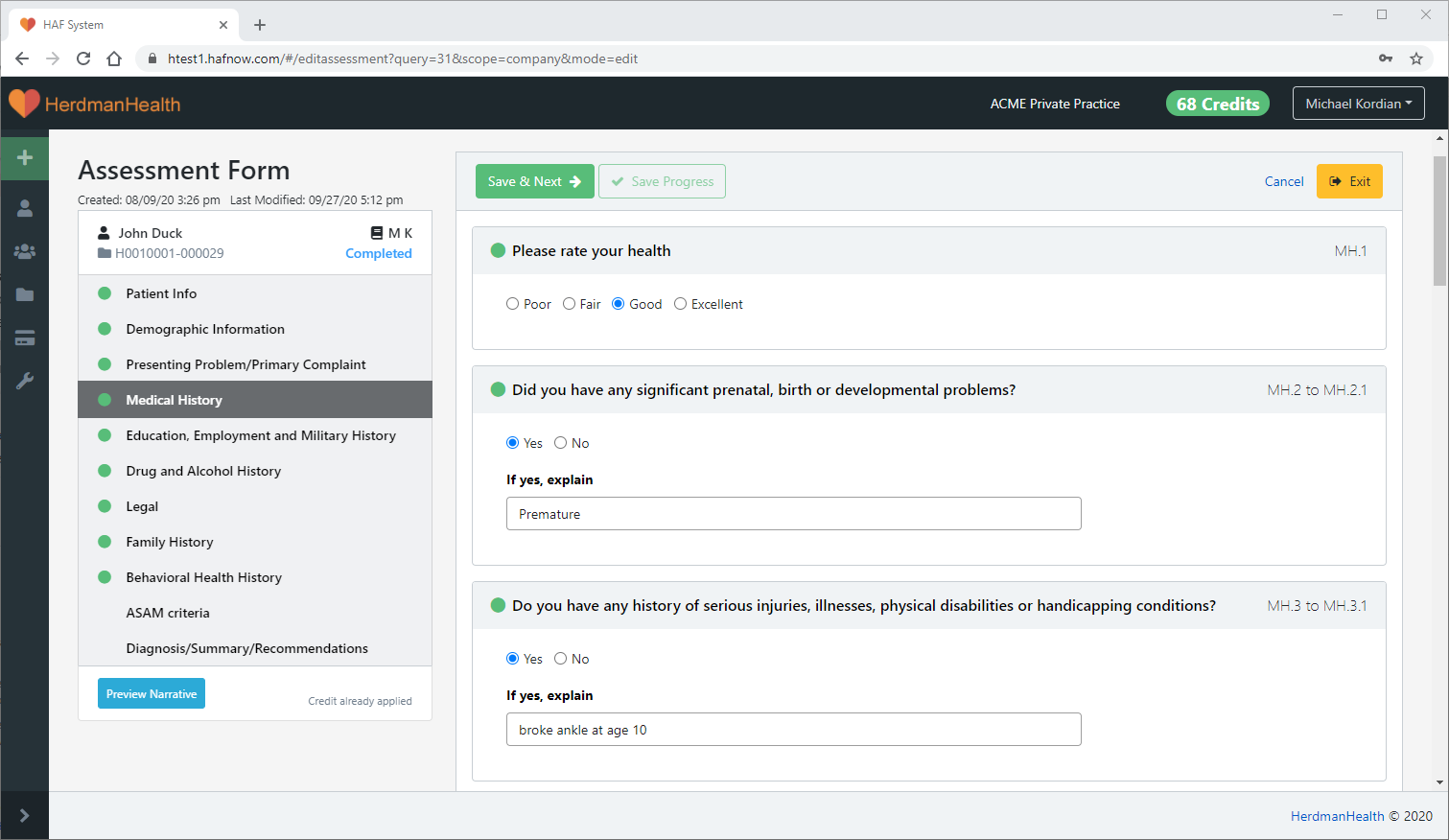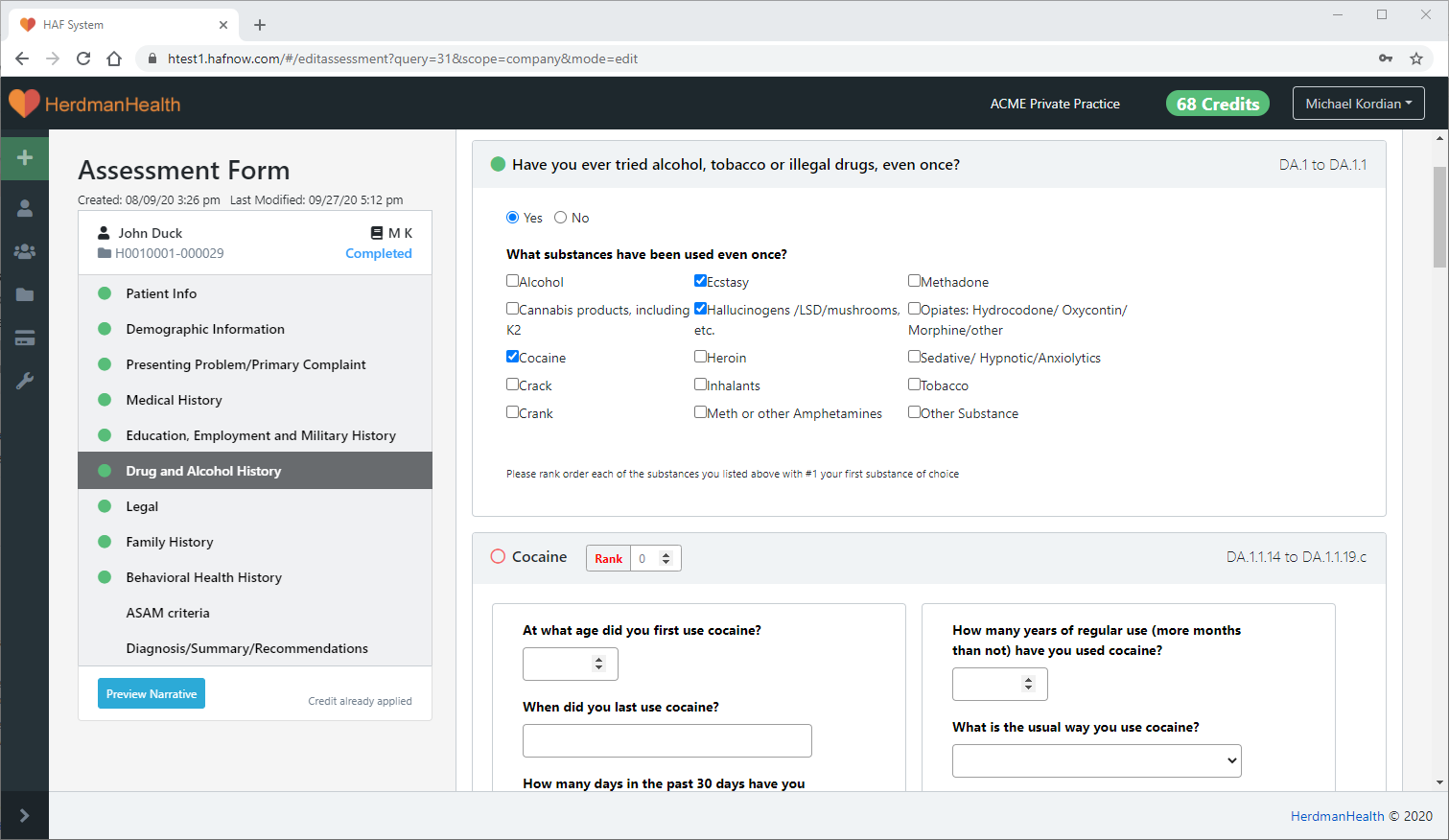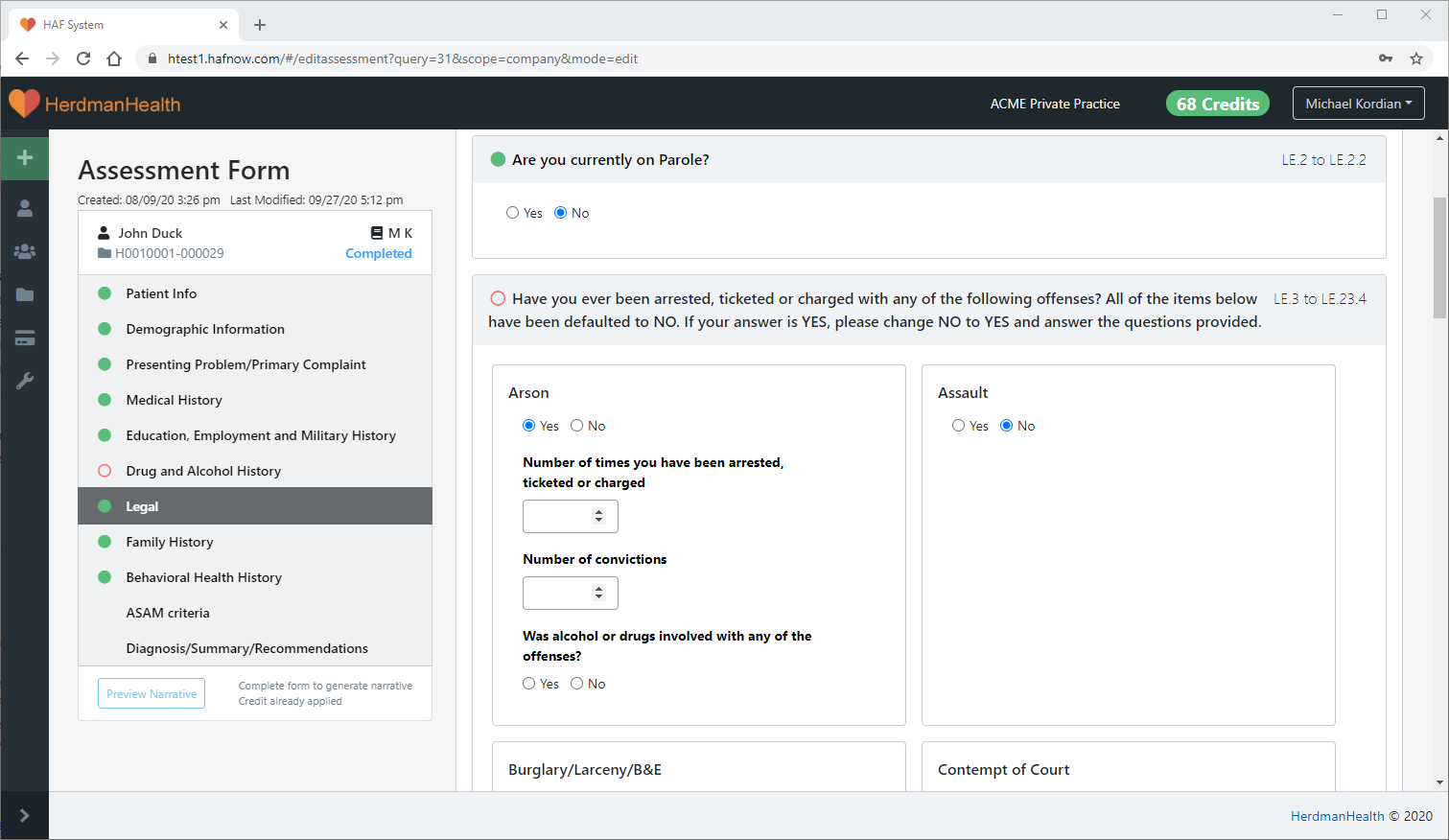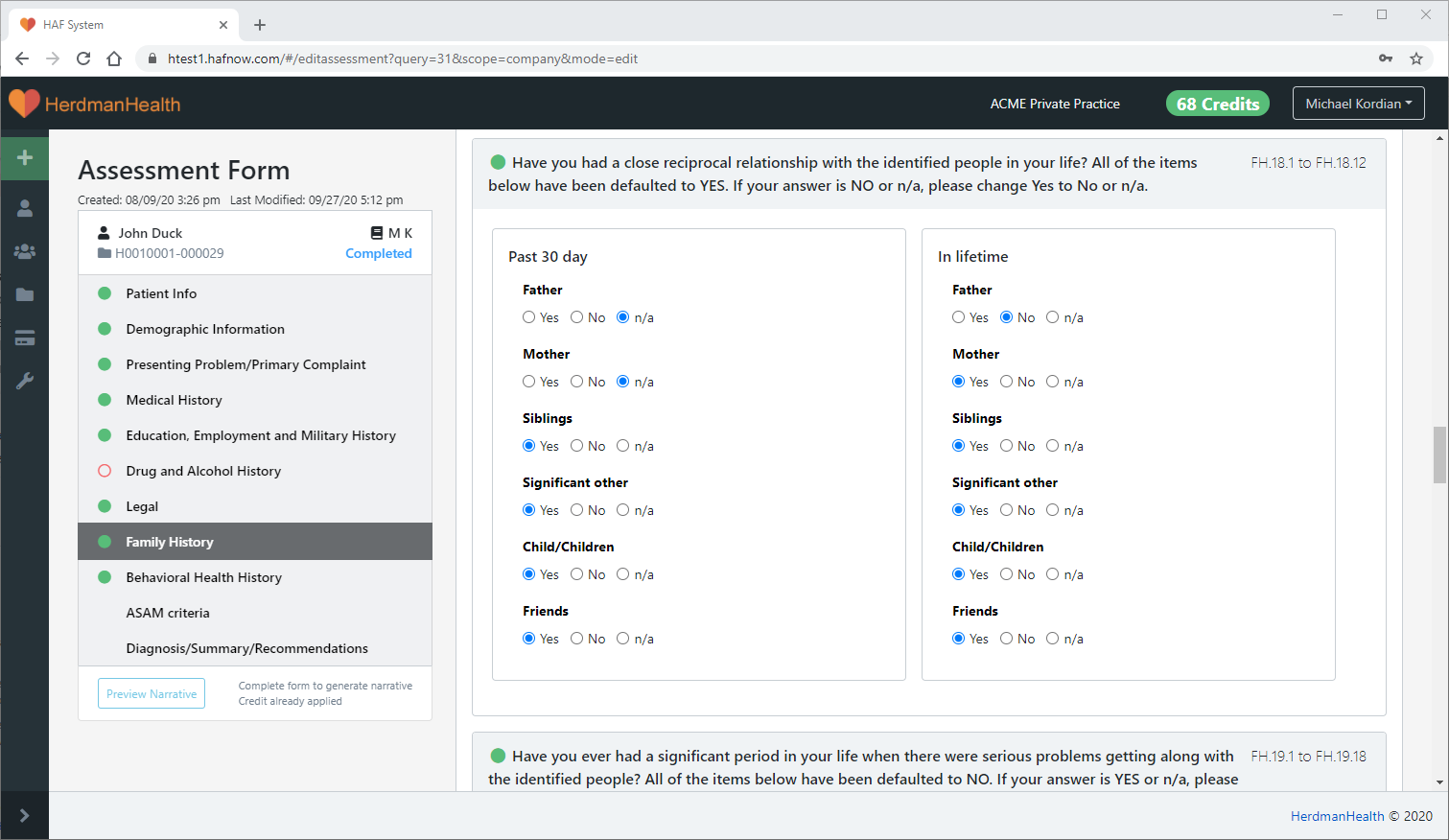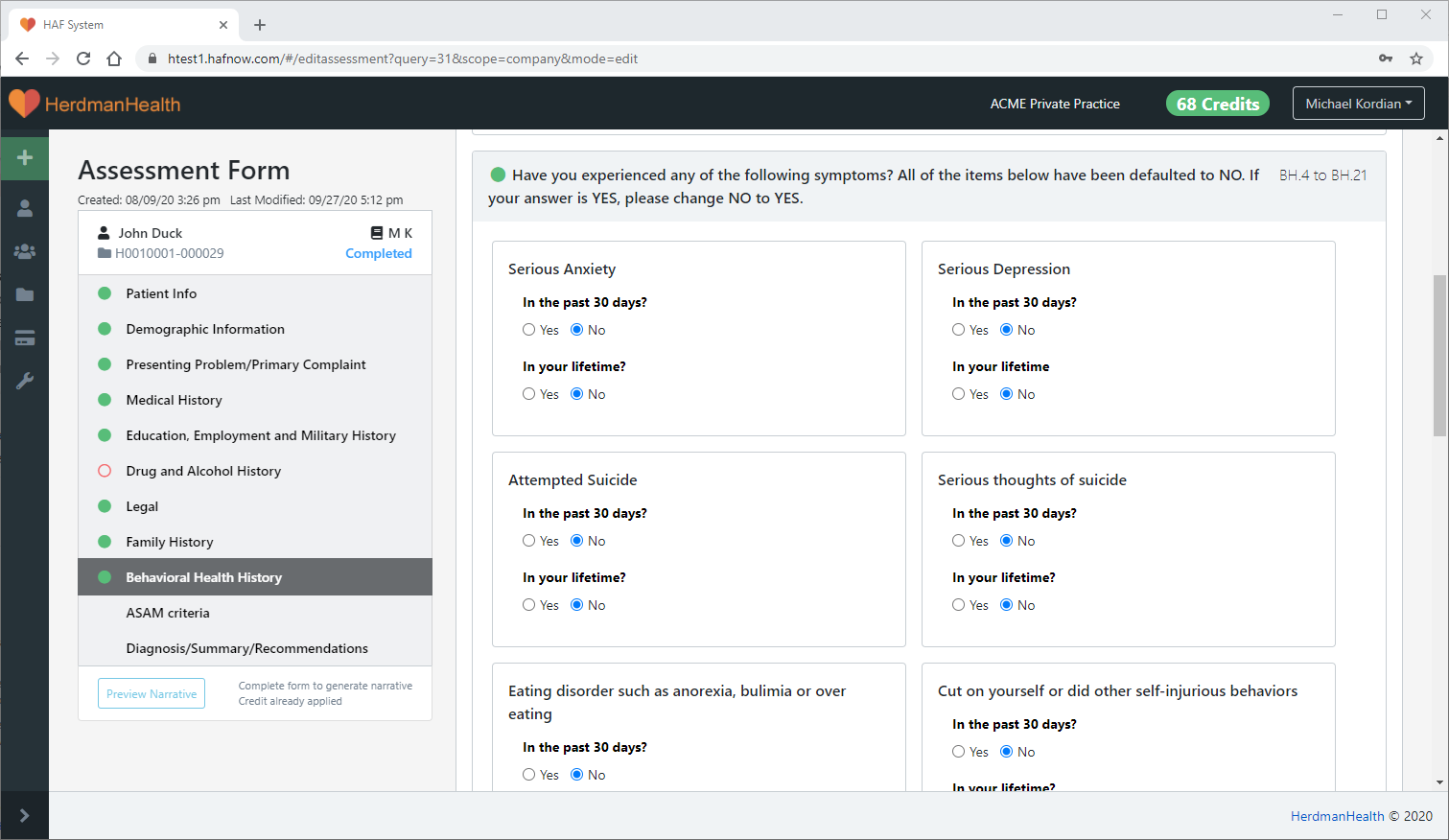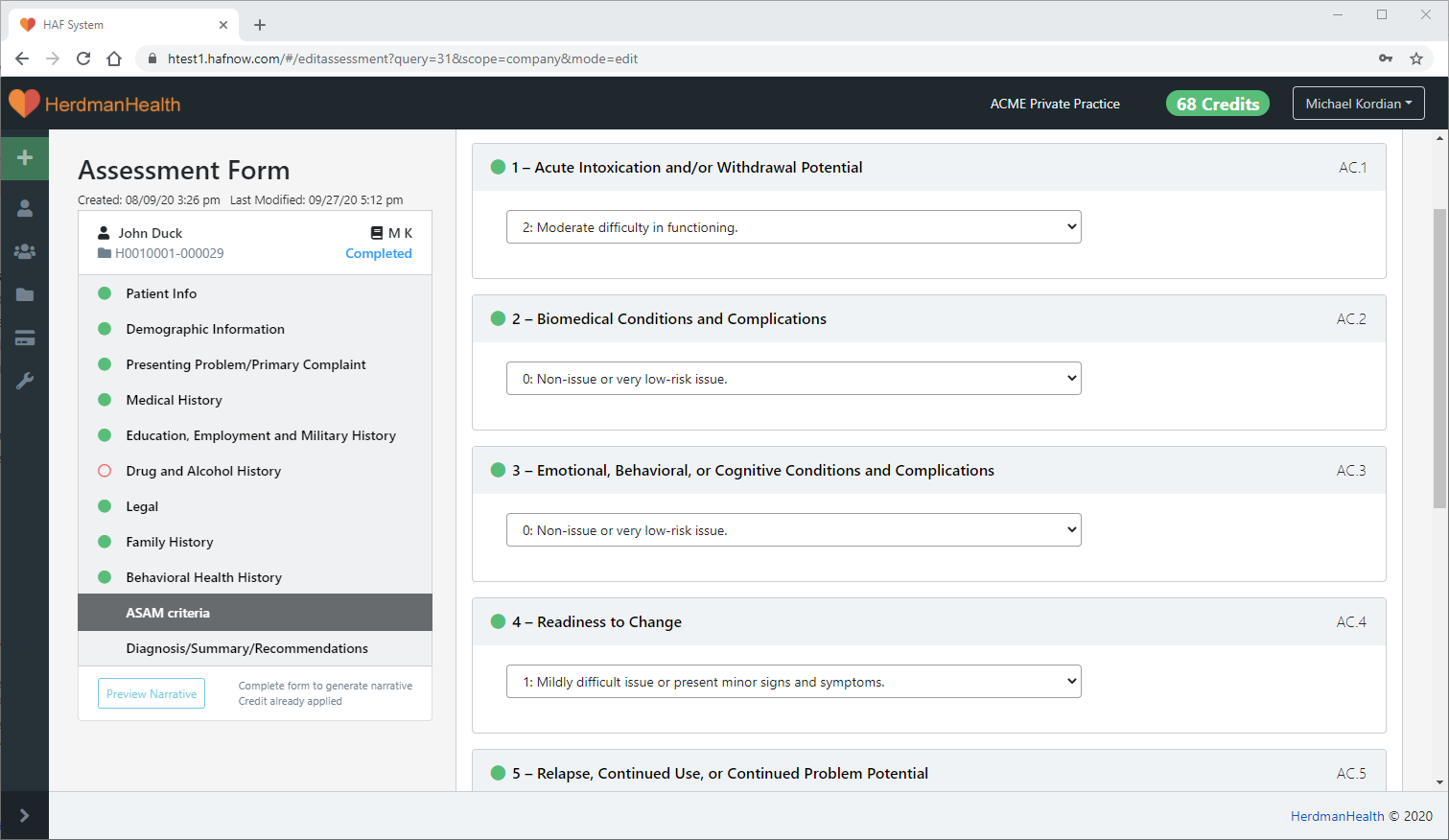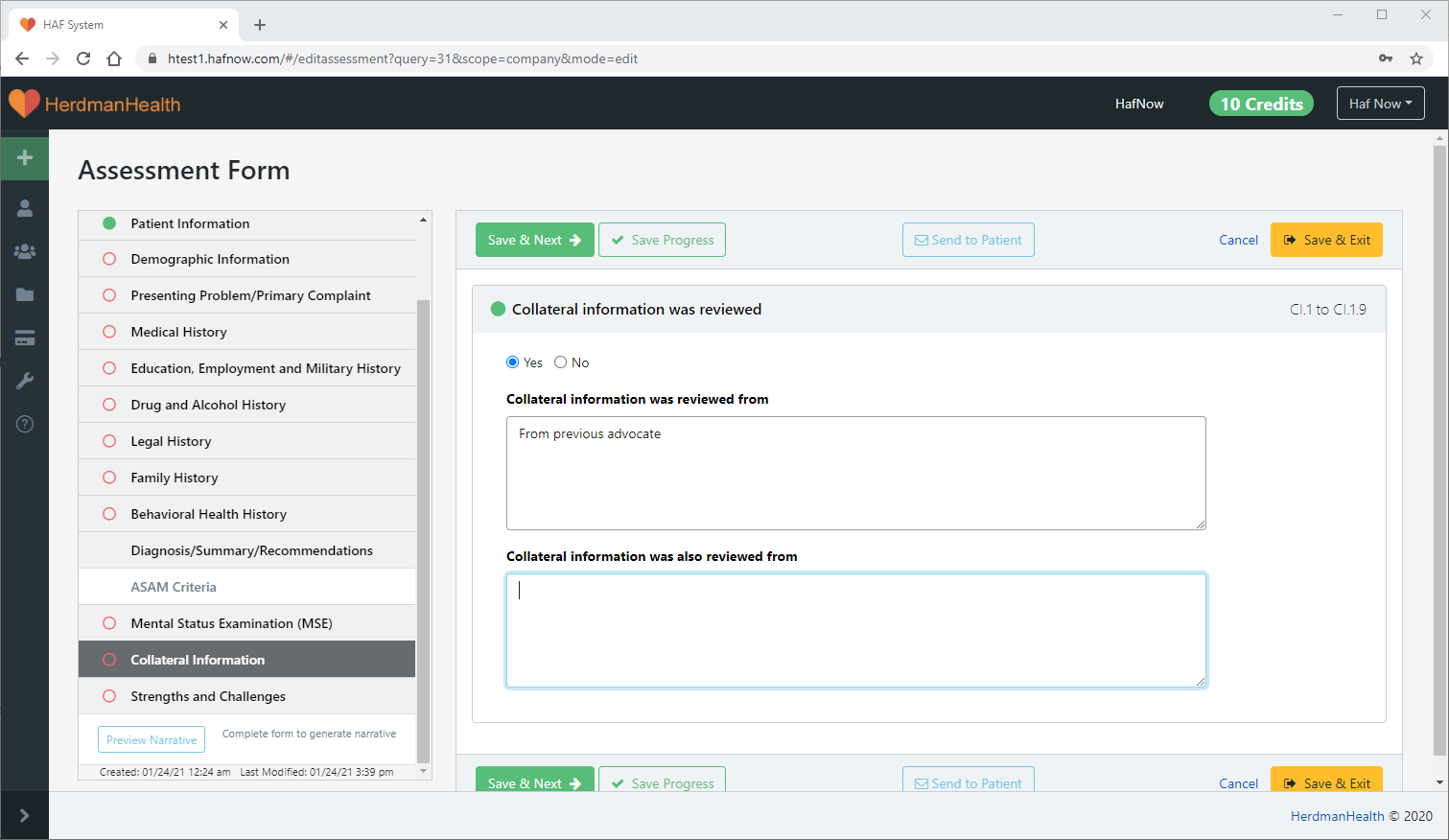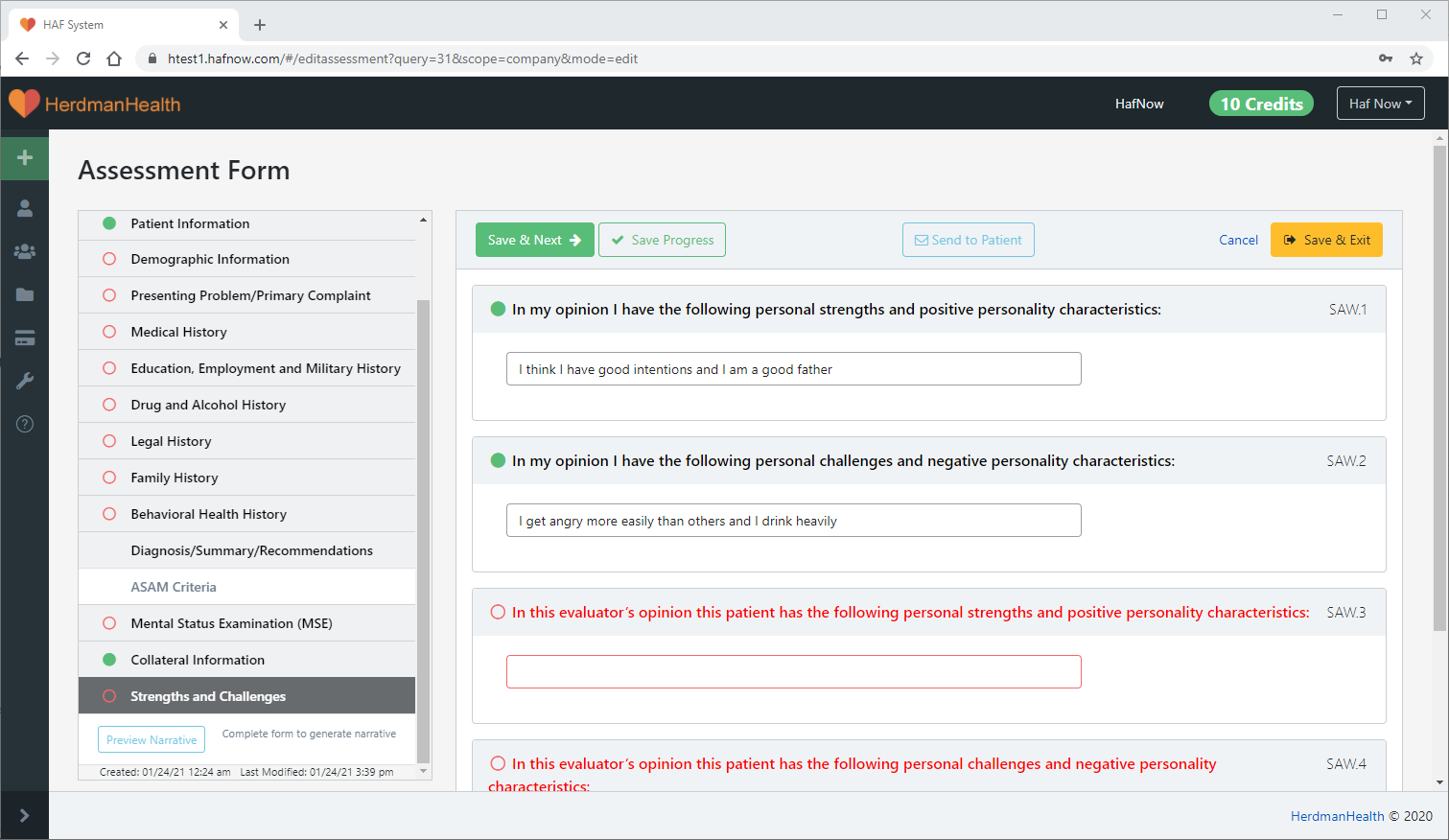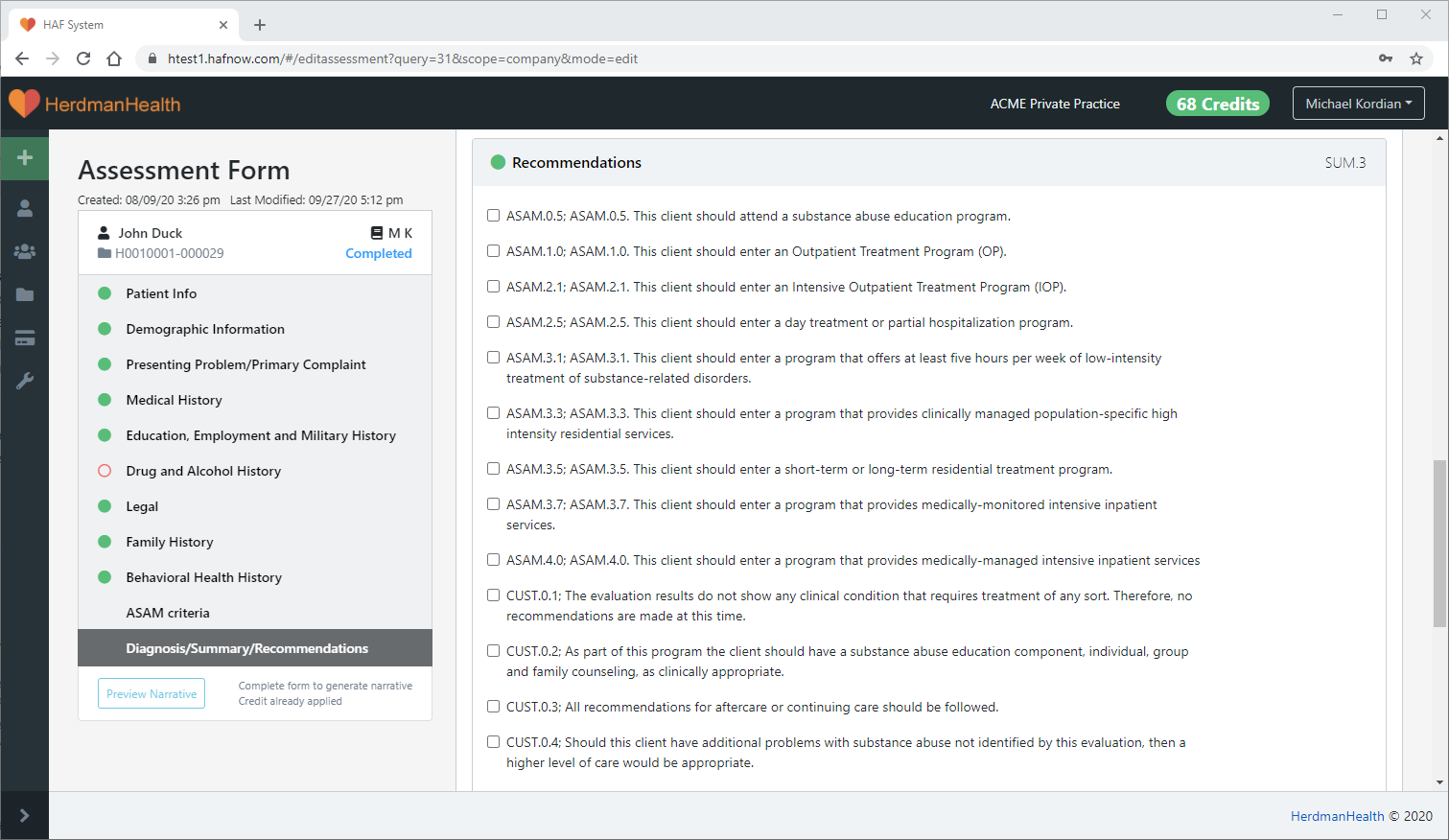What is Covered
The Herdman Assessment Form (HAF) assists counselors, therapists and psychologists in gathering patient information, the chief complaint/reason for referral, and bio-psycho-social information in the following areas: Medical History, Educational/Employment/Military History, Substance Use History, Legal History, Family History, and Behavioral Health History.
Sections for the counselor to complete include: ASAM Criteria (4th Edition); Mental Status Examination (MSE); Collateral Information; Strengths and Challenges; Problem List; Diagnosis (DSM-5TR) Summary/Recommendations; Suggested Recommendations; and Case Management Goals.
- HerdmanHealth has eight types of Evaluations:
- HAF: Substance Use Evaluation for Adults
- HAF: Substance Use Evaluation for Adolescents
- HAF: Psychological/Mental Health Evaluation for Adults
- HAF: Psychological/Mental Health Evaluation for Adolescents
- HAF: Co-occurring Evaluation for Adults
- HAF: Co-occurring Evaluation for Adolescents
- Addiction Severity Index (ASI)- 5th Edition
- Addiction Severity Index – Lite (ASI-Lite)
Patient Information
The first step is to identify the patient. This includes the patient’s name, Identifier # (SSN), birth date, culturally sensitive gender selection, marital status, address information, phone and an email address in order to send the patient a link to complete the HAF (Great for tele-health or completed before an in-person interview.)
Demographic Information
Questions about identified race, marital status/satisfaction, early childhood living location, religious preference, and current living location.
Presenting Problem/Primary Complaint
This section includes the primary complaint of the patient in their own words; dates and factors that led to the assessment, such as a DUI or other referral for the assessment.
Medical History
The patient’s medical history that includes birth and developmental history, history of illnesses, current chronic conditions, hospitalizations, disabilities, gender-related medical questions, HIV testing, medical provider questions and personal feelings about their health and need for further treatment.
Education, Employment and Military History
Includes pertinent educational history, past and current employment history, and military history.
Drug and Alcohol History
Lists all substances ever used and ranks the top three substances of choice; asks pertinent questions about patterns of use, method of using; withdrawal and treatment history, and more.
Legal History
Includes whether the patient is currently on Probation or Parole; history of legal charges and whether substances were involved; incarceration history; current charges; and, court involvement.
Family History
Includes family history and status of relationships (past month or lifetime); substance use history, asks about family history of alcohol, drug use problems or mental health issues.
Behavioral Health History
Covers current and past psychiatric/psychological problems; current provider(s) and medication management; and, provides a current and lifetime symptom checklist.
ASAM Criteria – 4th Edition
The counselor has the choice to add ratings on the ASAM six dimensions, complete a mental status examination, add collateral information, identify a patient’s strengths and challenges, and identify patient’s problems to treat, case manage or refer. The counselor is responsible, based on all the information gathered, to make a clinical diagnosis and make appropriate level of care recommendations.
Mental Status Examination (MSE)
For psychological and mental health evaluations, a comprehensive mental status examination (MSE) is part of the assessment process in combination with the bio-psycho-social history, your clinical interview and consideration of collateral information.
Collateral Information
Third-party collateral information is key in both substance use evaluations and psychological/mental health evaluations. Information obtained can either support the patient and your clinical judgement or provide contradictory information to what the patient has reported.
Strengths and Challenges
Evidence-based practice (EBP) supports strength-based treatment planning. The Core Function of Assessment requires an integrated approach to treatment planning based on the client’s strengths, weaknesses, and identified problems and needs.
Diagnosis, Summary, Recommendations
It remains the provider’s responsibility to make the appropriate diagnosis based on all of the assessment data collected. The Summary pulls all the assessment data together and provides a rationale for the diagnosis and recommendations made. The provider can then use a checklist of ASAM levels of care and other commonly made recommendations for any client. The provider can add one’s own recommendations in the Setup tab of the organization.
Get Started Now - It's Free
Join hundreds of practices using the Herdman Assessment Form to streamline their practice.
